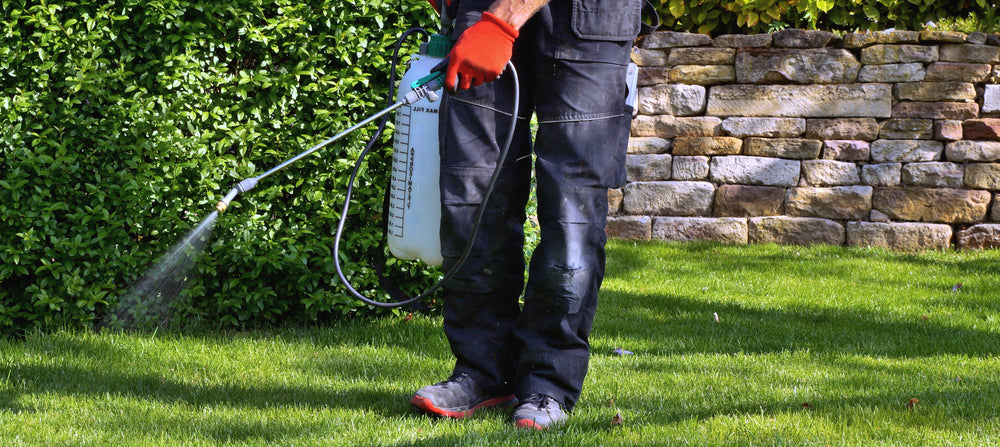Choosing the right product for your gardening needs is always important, and a great example is any situation where you need to choose herbicide for weeds. There are a number of weed herbicide products out there, and determining the ideal one for your precise needs will help in several ways.
At Anderson's Seed and Garden, we're proud to offer a huge range of gardening supplies and products, from annual flower seeds to herbicide products and more. Here are some tips on why it's important to choose the right weed herbicide, plus some information on the different types of weeds and herbicides, plus which might be right for you - and even some basic application tips.
Why is the Right Weed Herbicide Important?
Firstly, why is it important to choose the right weed herbicide? The answer is simple - using the wrong herbicide can not only be a waste of time and money, but it can also harm your garden. Using the correct herbicide for your specific type of weed will ensure that it effectively targets and eliminates the unwanted plants without causing damage to your desired vegetation.
For instance, using a broad-spectrum herbicide on your lawn can kill not only the targeted weeds, but also the grass and other plants surrounding it. This can result in a patchy and unsightly lawn. On the other hand, using a specific herbicide designed for your type of weed will effectively eliminate it while leaving your desired plants unharmed.
Types of Weeds
While there are a variety of sub-categories here, let's take a look at some of the broad types of weeds that you may encounter in your lawn and garden:
- Broadleaf Weeds: These are the most common types of weeds that have wide leaves and typically grow close to the ground. Examples include dandelions, clover, and plantain.
- Grassy Weeds: As the name suggests, these types of weeds resemble grass and can be difficult to spot in a lawn. Crabgrass, quackgrass, and annual bluegrass are some common examples.
- Sedges: These weeds have triangular-shaped stems and tend to grow faster than other plants in the lawn or garden. Yellow nutsedge, purple nutsedge, and green kyllinga are some varieties of sedges.
It is important to identify and understand the different types of weeds in order to effectively control them. Each type may require a different approach when it comes to removal and prevention.
Herbicide Types, Selection, and Application Tips
Here are some common weed herbicide types to consider, plus when they might be ideal to select and some basic application tips.
Broad Spectrum Weed Killers
Some of the most common weed killers are broad spectrum herbicides. These types of herbicides are designed to kill a wide range of weeds and plants, making them effective for general weed control in large areas such as lawns or fields. They work by attacking the cell walls of plants and causing them to dry out and die.
Broad spectrum herbicides can be selective or non-selective. Selective varieties target certain types of plants while leaving others unharmed, whereas non-selective herbicides will kill any plant they come into contact with.
When selecting a broad spectrum weed killer, it is important to carefully read the label and follow application instructions to avoid damaging desired plants. Applications of broad spectrum weed killers typically involve spraying the product directly onto the leaves of weeds or onto the soil surrounding them.
Pre-Emergent Herbicides
Pre-emergent herbicides are applied to the soil before weed seeds germinate, preventing them from emerging and becoming established. These types of herbicides are effective against annual weeds, which germinate from seeds each year.
Some common pre-emergent herbicides include dithiopyr, pendimethalin, and prodiamine. These products should be applied in early spring, before temperatures reach 55-60°F (12-15°C) for at least a week. This timing allows for optimal control of summer annual weeds.
Post-Emergent Herbicides
Post-emergent herbicides are applied after weeds have emerged from the ground. There are two main categories of post-emergent herbicides: selective and non-selective. Selective herbicides only target specific types of weeds, while non-selective herbicides will kill any plant they come into contact with.
Some common post-emergent herbicides include glyphosate, 2,4-D, and dicamba. These products should be carefully applied to avoid damage to desirable plants.
Before using any type of herbicide, it is important to read the label instructions carefully and follow them closely. Improper use or application can not only reduce effectiveness but also harm beneficial plants and pollinators. It is also important to wear personal protective equipment when handling herbicides.
At Anderson's Seed and Garden, we're proud to offer an unmatched selection of herbicides for all your weed control needs. For more information on these or any of our annual flower seeds and other seed products, contact us today!

